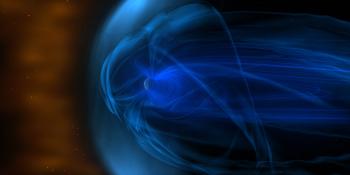Space Weather Forecast - Discussion
Issued: 2024 May 19 0030 UTC
Prepared by the U.S. Dept. of Commerce, NOAA, Space Weather Prediction Center and processed by SpaceWeatherLive.com
Solar activity
24 h Summary
Solar activity returned to low levels. Region 3679 (S08W07, Eho/beta-gamma) developed additional intermediate spots, and was responsible for the largest flare of the period, a C7.2/1n flare at 18/0538 UTC, as well as a few low level C-class flares. Region 3685 (S13E42, Ehi/beta-gamma) continued to show weak development in its intermediate spots, but was far less active this period. Slight growth was observed in Region 3674 (S12W27, Csi/beta) and Region 3683 (S23W46, Dsi/beta). Region 3683 popped off a C3.9/Sf flare at 18/2016 UTC, while Region 3674 remained inactive. The remaining regions were either stable or slightly decaying.Forecast
Solar activity is expected to be low with M-class flares (R1-R2/Minor-Moderate) likely and a chance for an X-class flare (R3/Strong or greater) on 19-21 May.Energetic Particles
24 h Summary
The greater than 10 MeV proton flux was slightly elevated, but well below S1 (Minor) levels. The 2 MeV electron flux was at normal to moderate levels.Forecast
There is a slight chance for the greater than 10 MeV protons reaching S1 (Minor) levels on 19-21 May due to the flare potential of Region 3685. The greater than 2 MeV electron flux is expected to remain at normal to moderate levels, with a chance for high levels, through 21 May.Solar Wind
24 h Summary
Solar wind parameters gradually returned to near-background levels as effects from the 14 May CME arrival relinquished. Total field decreased from a peak of 17 nT to near 6 nT, Bz had a maximum southward deflection to -15 nT but has since become positive, and solar wind speeds have leveled off around 410 km/s. Phi angle was mostly negative until approximately 18/1100 UTC when it switched to a positive orientation.Forecast
Solar wind parameters are expected to continue near background levels early on 19 May. By mid to late day, the solar wind environment is expected to see the influences of the passing CME from 16 May. Additional enhancements are then expected on 20 May as the CME from 17 May scrapes the Earths magnetosphere. Conditions should begin to return to a more relaxed state on 21 May as CME influence tapers off.Geospace
24 h Summary
Geomagnetic activity was quiet to unsettled, with an isolated active period.Forecast
Quiet to unsettled levels are expected early on 19 May before increasing to mostly active conditions, with a chance for isolated G1 levels, as the CME from 16 May is expected to graze the Earth. By 20 May, unsettled to active levels are expected, with G1 (Minor) storming likely, due to glancing CME effects from the 17 May CME. Mid to late day on 21 May, active levels are expected to decrease to mostly unsettled levels as CME effects gradually diminish.Latest news
Latest forum messages
What makes AR3684 magnetically distinct from AR3685? 5Filaments and prominences 127Unproven theories 481AR3664 1072AR3685 53
More topicsSupport SpaceWeatherLive.com!
A lot of people come to SpaceWeatherLive to follow the Sun's activity or if there is aurora to be seen, but with more traffic comes higher server costs. Consider a donation if you enjoy SpaceWeatherLive so we can keep the website online!

Space weather facts
| Last X-flare | 2024/05/15 | X2.9 |
| Last M-flare | 2024/05/17 | M7.1 |
| Last geomagnetic storm | 2024/05/17 | Kp6 (G2) |
| Spotless days | |
|---|---|
| Last spotless day | 2022/06/08 |
| Monthly mean Sunspot Number | |
|---|---|
| April 2024 | 136.5 +31.6 |
| May 2024 | 157.2 +20.7 |
| Last 30 days | 171.9 +57.9 |


